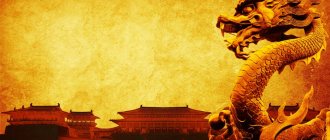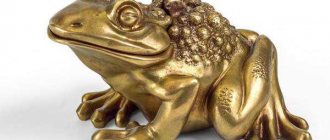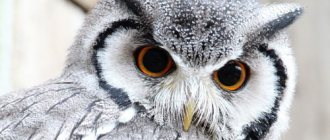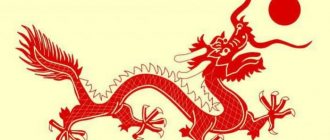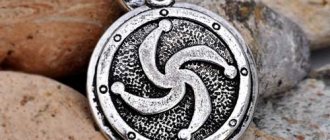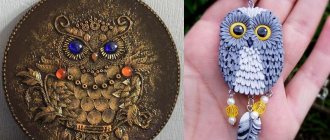» Magic items » Talismans » Properties and meaning of the turtle talisman
0
2595
Article rating
The turtle mascot has an ancient history and is associated primarily with the culture of China. The turtle symbol is of great importance for the philosophy of Feng Shui, which is extremely popular not only in the east, but also in our country. A figurine or image of a turtle is one of the main feng shui talismans. According to this science, it should be present in every home and workplace. Let's take a closer look at what the turtle symbolizes, what magical properties it has and what benefits it brings to its owners.
Properties and meaning of the turtle talisman
Turtle symbol in different cultures.
The turtle symbol can be found not only in Chinese culture. Of course, it is mainly common in Asian countries, but also in Europe this animal was revered as a symbol of longevity and fertility.
Among the Slavs.
The Slavs treated the turtle without any trepidation. Their culture considered any amphibians unclean animals, and they only felt disgust towards them.
For the Slavs, the turtle was the personification of greed. According to their beliefs, the gods turned anyone who showed this quality into a turtle.
Some Slavic legends say that turtles are the same snakes, but the gods covered them with shells so that they could no longer harm people.
Mythology of India.
In Indian legends, the turtle was a symbol of the universe. According to ancient writings, elephants stood on the shell of a giant turtle to support the planet. The turtle shell represented the heavenly world on the outside, and the earthly world on the inside.
By connecting with each other, these two worlds ensured the balance of the Universe.
Legends of China.
In China, an animal such as a turtle was treated with respect. She was considered a symbol of longevity and endurance.
The Chinese used animals for fortune telling: they tried to read the future from the lines on the shell.
According to Feng Shui philosophy, figurines of four animals should be kept in every home: phoenix, dragon, unicorn and turtle.
Chinese warriors, going on a campaign, carried banners with images of a dragon and a turtle.
Features of the location of the turtle symbol
And even here there are some nuances.
- A turtle is placed on the windowsill if there is a bad view outside the window or if there is a source of negative energy (garbage cans, medical institutions, buildings that house troublemakers, etc.). In this case, the animal must look out the window - at an unfavorable object.
- If the figurine is made of stone, then it is usually placed on the balcony.
- It is known that the turtle is a northern sign and prefers the cold season. For this reason, if you have a jewelry amulet, then it is advisable to wear it continuously during these months.
- A turtle would also be appropriate in a children's room. Here they usually hang a themed night light, lay out pillows in the shape of animals and soft toys.
According to the teachings of Feng Shui, when choosing a place for a turtle, you should definitely listen to your intuition. And even if you have identified it in a zone that does not correspond to any of the recommendations, but you are completely satisfied, you do not need to move the symbol.
Expert opinion
Ilmira Derbentseva
Parapsychologist
When placing a turtle (a flowerbed or fountain in the shape of this animal) outside the walls of your house, choose an area closer to a pond or next to the terrace. It should be located on the north side of the home.
The meaning of the talisman.
This symbol has not one meaning, but several:
Wisdom. The turtle is naturally very slow. Therefore, we apply the principle “the slower you go, the further you go.” As for wisdom, in this case we do not mean slowness, but carefulness in making important decisions. There is no need to rush - everything goes as the Universe intended. You need to define a goal and slowly but surely move closer to achieving it, without committing rash acts.
Perseverance. The turtle represents hard work, which invariably leads it to its destination. Despite its slowness, the animal moves forward, not paying attention to obstacles.
Health, longevity. These animals are among the longest living on the planet. The measured flow of their lives, the absence of fuss and haste - this is what people should learn too. This behavior is the key to good health. A strong turtle shell symbolizes protection from damage.
Wealth. Turtles lay many eggs, which is why the Chinese considered them to be animals that represent wealth and prosperity. However, this symbol will not bring easy money. In order for money to appear in life, you will have to work hard and fruitfully.
What does the turtle symbolize?
In ancient times, the image of a lying turtle appeared in combination with 3 elephants who supported it with their bodies from below. Such a composition symbolized something strong and fundamental, personifying the structure of the world and planet Earth, which was then considered flat. The durable shell of an animal seemed to ancient people as a symbol of the foundation and structure of the world.
Turtle in the teachings of Feng Shui.
In the teachings of Feng Shui, the turtle symbol is one of the most respected and popular. She will thank her owner with good health and give him many years of life, endow him with wisdom and patience.
For the Chinese, this animal serves as a symbol of prosperity. If possible, we tried to have a live turtle at home. As a last resort, they put up a figurine with her image. It was believed to have a beneficial effect on family relationships
Where to place it in the house?
The placement of the figurine depends on the direction in which you would like it to work:
- For career growth - in the northern part of the house (apartment),
- To protect against negativity - in the bedroom, behind your back.
- For family well-being - in the eastern part (it is better if it is a talisman of three turtles standing on top of each other),
- For financial well-being - in the south-east side (it is desirable that the figurine is golden or wooden).
Tips for choosing a mascot
Fundamental in this matter is your gut feeling and intuitive premonition. Did you like a beautiful figurine, accessory, or painting? Take it without hesitation!
Do you want to bring a real animal into your home? Don't deny yourself! Just first familiarize yourself with all the intricacies of caring for it. In reality, only a healthy, energetic and contented turtle can have all these properties.
Listen to what Feng Shui recommends so that you make the right choice and find a worthy place in your home for a talisman.
Turtle amulet according to zodiac signs.
For some representatives of the zodiac signs, such a talisman as a turtle can significantly help in life:
Capricorn. One of those signs for whom this animal in the form of a talisman suits more than others. Thanks to the amulet, Capricorn will increase self-confidence, will be able to correctly set life priorities, and direct efforts in the right direction.
Scales. The talisman will help them reveal their best qualities, endow them with wisdom and enterprise.
When purchasing a talisman, Taurus and Cancer people need to take into account its appearance:
Calf. To gain wisdom and achieve prosperity, representatives of this star sign are advised to purchase a copper figurine covered with precious stones.
Cancer. The figurine will be a protective amulet if it is painted in light shades - similar to the color of water or the moon. Gray-brown sculptures are not worth buying.
It is useless for Aquarians to buy a talisman in the form of a turtle - it does not suit them. Aries and Sagittarius can opt for gold-colored figures to attract financial flows into life.
Handmade paper artifact
If you don’t have a souvenir or a live reptile, you can make a paper talisman. This amulet looks like blue cardboard with a photograph of a turtle and a portrait of a man in the center. Moreover, the image of the animal is larger than the owner’s face. The artifact is placed in the owner's room on the north wall.
The meaning of a turtle can be enhanced by placing an aquarium, a fountain or a moisture-loving flower nearby. It is the water element with the image of this reptile that allows you to successfully realize long-term goals.
Types of turtle amulets.
Made from turquoise.
A turquoise turtle is suitable for people who are not confident in themselves. Such a talisman will help you overcome your fears and take action. In order for the amulet to take effect, it must always be carried with you - for example, in the form of a pendant.
Rings or rings.
There are two ways to wear a turtle ring. If you are in the mood to communicate with people around you, the ring is put on in such a way that the head points outward and the tail points toward the owner. If you know that there is a not very pleasant communication ahead (trial, litigation, dispute), the ring is put on the other way around (with the tail out).
With a mirror shell.
This talisman will protect its owner from any negative influence: aggression of others, anger, envy, etc.
Black rock turtle.
Such a symbol will help everyone who experiences remorse and repentance. The figurine is placed in the western part of the apartment, in a visible place. Once a month, the figurine is cleaned: kept under running water or buried in the ground overnight.
From jade.
The jade turtle will protect you from any negativity and relieve nightmares. From time to time it needs to be dipped in water.
Made of transparent material.
Such a talisman helps wishes come true. You just need to hold it in your hands, think about the innermost and wait for the fulfillment of your plans.
With gilding.
A gilded turtle attracts money to the house. A greater effect can be achieved by placing the figurine next to a source of water.
Made of silver.
This symbol is useful for students: it helps in learning foreign languages, mastering new material, and consolidating acquired knowledge.
Talisman of three turtles.
This talisman symbolizes the connection between generations. It is used by married couples to achieve harmony and happiness. The figurine is placed in the northern part of the room, but not in the bedroom!
Paper or cardboard turtle.
You can make a talisman from paper or cardboard. It is recommended to paint a do-it-yourself turtle blue and install it next to a water source.
Turtle with a dragon's head.
In Chinese symbolism there is a special animal - a turtle with a dragon's head. The combination of these two magical animals is designed to increase a person’s energy, increase his self-confidence, and protect him from negativity.
LiveInternetLiveInternet
Turtles are living fossils of our planet. Even evolution is unable to cope with them: over the past 200 million years they have remained virtually unchanged. They are distinguished by their fantastic vitality (with a head smashed to rags, a turtle can live and move for tens of days!). And one experimental specimen with its brain removed lived for six months. They are long-lived. 150 years is the normal age for a land turtle. Sometimes they live 200 years or more. Some species are amazing in their strength: the green sea turtle can carry as many people as can fit on its shell. There are also aggressive representatives of these animals. The famous snapping turtles are very biting: they grab snakes, birds on the shore and in the water, and there have been cases when they bit off the fingers of people swimming. Another interesting feature is that they are not afraid of the cold and can crawl on ice. Also noteworthy is its relative, the snapping turtle, which catches fish with a “worm”: it lurks at the bottom, opens its mouth and periodically sticks out a bright red outgrowth on the “back” of its tongue, very similar to a wriggling worm. Serves as a symbol of material existence. Due to its slowness, it is a symbol of natural evolution, as opposed to the more rapid spiritual one. The most important mythological symbol of Assyria, India, China, Japan and other countries of the Far East, with cosmic implications. In India and Greece, the turtle was considered a sacred animal of female goddesses. In Japan it is a male symbol. In Indian mythology, the turtle or its legs serve as support for the cosmos. In other mythologies it is known as the throne of heaven, the primordial waters, or the island of the immortals. In Mongolian myths, the golden turtle holds the central mountain of the universe. The arched shell of the tortoise is seen as the vault of heaven emerging above the flat earth. The turtle is perceived as a direct mediator between heaven and earth, a symbol of the entire universe. Most people associate the turtle with clumsiness and slowness. For many peoples, these turtle qualities have become part of proverbs and sayings. On the streets of London you can see posters depicting a tortoise and a hare, warning pedestrians: “Don’t gallop like a hare and don’t crawl like a tortoise.” But on the Fiji islands, the turtle is considered a symbol of speed and superior navigational abilities. She is depicted on the official letterhead of the Marine Department. Only these are not land turtles, but sea turtles. Ridley is one of them. It is up to 80 centimeters long and feeds on both plant and animal foods. His temper is quite ferocious. When caught from the water, the ridley causes a lot of trouble: it bites through oars and hands, and lunges at people.
According to Iroquois legend, at the very beginning of peacemaking, the supreme deity decided to plant a giant world tree in the primordial ocean. But he needed a strong support. The animals who gathered for council decided to extract earth from the bottom of the ocean. When this task was solved, the question arose: how to strengthen it? The turtle Hah-hu-nah agreed to take on the responsibility of propping up the universe. Pieces of silt extracted from the bottom were placed on its strong shell, which gradually grew to form the earth. But according to another legend included in the “Valam Olum” - the famous epic tale of the North American Indians, in ancient times a powerful and huge snake, enveloping the earth in a living ring in order to destroy all living things, began to spew endless streams of water from its mouth. A great hero named Nanabush, the ancestor of people and animals, decided to save his dying descendants. To do this, he created a huge turtle, like a floating island. On her back, people and animals took refuge from danger. This myth is completely analogous to the legends about peacemaking, and the turtle plays in it the role of not just a support of the earth’s firmament, but the earth itself. For example, among the Japanese it supports the refuges of immortals and the World Mountain and means longevity, good luck and support. Urashima and the turtle
Once upon a time there lived a young fisherman who loved the sea more than anything in the world. He lived in a hut on the shore. Morning and evening, winter and summer, he never stopped admiring the sea. His name was Urashima. Every day he fished. But since he was in love with the sea and kind by nature, he always released the caught fish back into the sea. One day, having cast his fishing rod, Urashima suddenly felt that the line was very stretched. Pulling it out, he saw a large turtle caught on the hook. Urashima freed the turtle and sent it back to the sea. “I’d rather starve today,” he thought, “than kill a young turtle.” You know that turtles live for many, many years, but this one was still very young. The turtle disappeared in the waves, and after a while a girl of extraordinary beauty appeared at Urashima’s boat. Sitting down on its edge, she said: “I am the daughter of the sea king.” We live at the bottom of the sea. My father allowed me to turn into a turtle to test your kind heart. You are truly kind and noble. I invite you to visit me and see my underwater palace. Urashima could not utter a word, amazed by her unearthly beauty. My only desire was to follow her everywhere. “Yes,” he could only say, and, giving her his hand, he followed her to the bottom of the sea. A crystal fish with golden fins accompanied them. Before sunset they reached the underwater palace. It was made of coral and pearls and sparkled so much that it hurt the eyes. Dragons with soft velvet skin guarded the entrance to the palace. Urashima lived in the silence and luxury of the palace for four years with the beautiful princess. Every day the sea sparkled and shone in the rays of the sun. They were happy until one day Urashima met a little turtle. She reminded him of the day he went to the sea. He remembered his village and his family. The princess knew that one day he would remember and become homesick. “You must return to earth, to people,” she said. “If you stay here, you will hate me and die of boredom.” If you go now, you can go back. Take this pearl box tied with a green ribbon. But be careful not to untie the ribbons. Once you do this and open the box, you will never be able to go back. Urashima got into his boat and the princess carried it up. He swam to his native shore. Seeing him, he cried with joy. There was still a hill there, cherry trees were growing, and the coastal sand was still golden, from which he had built beautiful castles as a child. Urashima hurried up the familiar path. When he got up, he did not recognize the surroundings. The sun was still shining, the birds were singing and the sea was turning blue and shimmering. There was no hut, there was not even a tree under whose shade she stood. He moved on. What happened during the four years while he was in the underwater kingdom? Suddenly he saw a gray-haired old man resting under the shade of a tree, and went up to talk to him. - Excuse me, can you tell me how to get to Urashima’s hut? - he asked. - Urashima? - the old man asked. - This is a very ancient name. I heard it once as a child. It was in my great-grandfather's story about a boy who drowned at sea. His brothers, their sons and their grandchildren lived and fished here. But they were all already dead. This is a very sad story, isn't it? A young man went to sea 400 years ago and never returned home. Not even a chip of wood from his boat was found. The sea swallowed everything,” said the elder. Without a family, without a home, unknown and unwanted to anyone, Urashima was a stranger in his village. The elder, pointing towards the hill, said: “There is a village cemetery there, and there you will find his grave.” Slowly Urashima walked to the cemetery. There, among the names of his mother, father and brothers, he saw his own name carved on a gray gravestone. And suddenly he understood. Nothing connected him anymore with his village. Here on earth he was dead, he was 400 years late here. He must return to his beloved princess. He knew that he could not lose his box, tied with a green ribbon. He knew he had to hurry, but he felt tired and useless. He slowly returned to the shore, sat down on the sea sand and placed a pearl box on his lap. He dreamed of returning back to the sea kingdom. Mechanically, he untied the green ribbon and opened the box. White fog slowly floated out of the box and rose high into the sky. There he acquired the outline of his beloved, lovely princess. Urashima extended his arms to her and rushed after her, but the fog dissipated in the sea air. Urashima felt very old. His back instantly hunched, his hands shook, and his hair turned gray. His muscles became flabby and his legs could barely move. Soon, on the seashore, the children found the skeleton of an unknown person. And on the sea waves a small pearl box kept floating, swaying. A green ribbon swirled lightly in the wind above her. The Japanese benevolent symbol of prosperity and wealth is the mythical treasure ship TAKARABUNE. A silver ship floating on the waves is loaded to the brim with symbols of wealth and prosperity: gold and silver ancient coins, bags of rice, coral branches and other rarities, including a tailed turtle - a symbol of wisdom and longevity. In India, the turtle's inherent symbolism of stability was especially emphasized, which was expressed in the idea that the layers held the world standing on a huge cosmic turtle. On the other hand, it is believed that the cosmic tree grows from the back of a turtle - the incarnation of the guardian god Vishnu: According to ancient Indian beliefs, the earth rested on four elephants, which stood on a huge turtle, slowly making its way through chaos. “...The mountain began to sink into the muddy ocean floor. Then Vishnu turned into a giant turtle (this was his second avatar), dived into the ocean and put his back under the mountain. At the same time, Vishnu remained above, on the ground, in his four-armed body and with all four hands firmly held the snake-rope. And thus the gods and demons churned the ocean for a hundred years. Towards the end of the churning, Vishnu the turtle surfaced, his soul merging with the soul in his four-armed body. Vishnu said: “Wait for amrita.” Finally, a white vessel containing amrita appeared on the surface of the ocean...” The space turtle also played a major role in the myths of Ancient India. In the famous myth about the churning of the milk ocean, the king of turtles served the gods as a support for Mount Mandara, the cosmic whorl. In medieval Indian art, the universe was depicted as follows: a giant world serpent, encircling the universe in a ring, carries a colossal tortoise, on whose back stand four elephants propping up the earth; in the center of the earth's ocean there is a continent inhabited by people - Jambudvipa, there, in turn, there are also cosmic elephants, and on their backs rises the world mountain Meru. In ancient Chinese. The symbolism of the hero-creator of the world is also supported by the mythology of the North American Indians, where a turtle raises land from the depths. The black turtle represents the north, night and winter. According to legends, before hexagrams there were trigrams. The creation of the eight trigrams (Ba Gua) is attributed to the legendary Emperor Fu Xi, who laid the foundation for Chinese civilization in the 26th-27th centuries. BC. According to legend, one day he saw a huge turtle swim ashore from the Yellow River, on whose back were inscribed mysterious signs consisting of continuous lines and those interrupted in the middle. In their combinations, Fu Xi saw a system of symbols that corresponded to his ideas about the universe, where heaven and earth dominated, from the interaction of which all things and phenomena arose and passed into each other. Fu Xi invented Gua and thereby revealed the ideal way to govern people and the country. This happened in time immemorial; when people did not yet know agriculture, fire, or tools.
According to the myth of the mountains of the immortals of Penglai, five sacred mountains, on which lived deities and people who achieved bliss after death, floated on the surface of the ocean at a distance of several billion li from the shore. The immortal inhabitants of the paradise mountains fell ill from the constant sea motion, and then the supreme deity ordered his subordinates to catch fifteen giant turtles and force them to hold the mountains on their heads, replacing each other after sixty thousand years. Further, the myth tells how a certain giant caught six wonderful turtles on a hook, as a result of which two mountains plunged into the abyss. The connection of this legend with the archaic picture of the world is completely obvious: the five mythical mountains correspond to the five world mountains, which, according to ancient Chinese cosmography, were located at the cardinal points of space - in the south, north, east, west and center. Another ancient Chinese myth tells how, during a cosmic battle with the deity of fire, the god of water in a rage fell on the sacred mountain Buzhoushan, which served as a support for the sky, and broke it. This caused a universal catastrophe: the earth tilted sharply in one direction, and the world was threatened with destruction. The ancestor of people, the goddess Nuiva, undertook to eliminate the consequences of the cataclysm. She killed the giant monster Ao, cut off his four legs and used them as supports, placing them at the four corners of the earth. Ancient commentators report that the hieroglyph "ao", now out of use, meant a huge sea turtle. Thus, we can consider that this myth is essentially an echo of the legend about the creation of the universe, only slightly altered and obscured by additional motifs. Among the Chinese, the turtle is one of the four spiritually gifted creatures along with the dragon, phoenix and qilin; symbolizes the water element, yin, winter, northern regions, black color of primordial chaos. The turtle is called the Black Warrior - a symbol of strength, endurance and longevity. The banner with the dragon and the turtle was carried by the soldiers of the imperial army as a symbol of indestructibility, since both creatures, fighting each other, remain alive: the dragon cannot crush the turtle, and it cannot reach the dragon. The turtle is often depicted with a crane as a symbol of longevity. In China they believed that she had predictive abilities. The turtle is often depicted with a crane as a symbol of longevity. She supports the earth, and her four legs are at the four ends of the earth. According to Feng Shui, the turtle is a symbol of longevity and wisdom. The talisman of three turtles on top of each other symbolizes the well-being of three generations. This talisman will be especially beneficial for those families where more than one generation has lived. So, we advise you to acquire such a talisman to ensure happiness and health for each member of a large family. In Feng Shui, the black turtle, which is the guardian of the north, is especially valued, so, by the way, it is recommended to place the office in this area of the house. The black turtle talisman brings good luck and support in business, a smooth and stable increase in income and standard of living. The help of a turtle is especially important for the owner of the house and the breadwinner of the family. The turtle is a symbol of hard work that will be rewarded. The most “effective” talisman is a metal turtle, gilded or plated with silver. Metal generates water, supports it, and therefore the talisman acquires special power. In addition, the turtle is a symbol of career growth. If you place her image or figurine in the career sector, then you will always be able to enjoy success in your professional field. And finally, the Turtle, as we all know, is a symbol of wisdom, longevity and steady movement forward. The dragon turtle is a magical animal with the head of a dragon and the body of a turtle, a symbol of the harmony of the universe, which is one of the standards expressing the philosophy of Feng Shui. The functions of the talisman are to protect the house from everything bad that can penetrate or accumulate in it. In addition, the Dragon Turtle has specific abilities inherent in few Feng Shui talismans. According to ancient Chinese legend, this mythical creature appeared from the union of a dragon (the elder brother of the Chinese emperors) and a turtle, the guardian of truth and wisdom. When the last dragon was about to die, he was very worried that he would leave the Celestial Empire without his wise leadership and protection. The turtle, realizing that with the death of the dragon, great trouble could come to the country, gave his body to the spirit of the dragon. Thus, the two strongest patrons of China united. The turtle is a very useful creature: it “absorbs” aggression in the house. And if a child’s character begins to deteriorate during adolescence, psychologists recommend getting a turtle. The slowness and slowness of turtles have become proverbs and sayings, but Central Asian, or steppe, turtles (this is the breed most often kept at home) are capable of rising to a height of two thousand meters above sea level and calmly moving along a steep slope. The unique mental abilities of turtles are also evidenced by this fact: when it rains in the desert, they create a pool in which the water remains for as long as 6 hours. There is also a known case of a turtle saving a person. A passenger on a ship in the Caribbean fell overboard and floated for more than 15 hours (until another ship picked him up), holding on to the shell of a large sea turtle.
Ulana Kleps
https://herbalogya.ru/oberegi/tortile.php
FTG
.
Series of messages “Totem Animals”:
Part 1 - Animal - totem. Part 2 - Cat in legends and magic. ... Part 6 - Magpie in Slavic pagan mythology Part 7 - Snake in myths and legends Part 8 - Turtle - a symbol of wisdom and longevity. Part 9 - Raven in legends and tales of different peoples. Part 10 - What is your totem. ... Part 20 - RITUAL Finding a totem animal. Part 21 - Calling a fetch Part 22 - OWL MAGIC
Material for the figurine
A live turtle helps protect against any troubles, and is also the best talisman for small children who often get sick.
But if you prefer a figurine, then the Feng Shui turtle should be made of a suitable material.
A metal talisman allows you to cleanse the entire energy of the house and save your household from problems with money. This amulet allows you to improve your health and enhance your abilities.
Gilding or silver will improve a person’s material life. It is better to place such an item at the desktop or in a place where a person is used to working. A ceramic figurine will help in career growth - it will strengthen a person’s leadership qualities and allow him to reveal himself as a professional.
A ceramic figurine imparts wisdom and helps to save money.
A soft toy in the shape of a turtle will protect the whole family if placed close to the bed.
The image of a turtle can also serve to improve life and improve work for some family members.
02/1/2018 Elena Feng Shui rules 2 comments
Hi all! Since ancient times, the turtle has been considered one of the most important animals - it was with it that the whole world began, for which it was the support. In different eras, among different peoples, this animal symbolized immortality, endurance, and northern location. In China she was endowed with the ability to predict the future, in Japan - to support the World Mountain, in India she was revered as the first ancestor, personifying the feminine principle. The Mexicans took the turtle for the Great Mother in her terrible manifestation, and the Sumerians - the mistress of the depths. Let's look at what a turtle represents according to Feng Shui.
What do the myths say?
There are several myths in which reptiles play major roles, but three of them are the most famous:
- Until people learned that the earth was round, their ideas about the world boiled down to the fact that the earth’s plane was held by a huge turtle. In this myth, the turtle is assigned the main task - to maintain balance, not to overturn the earth, and not to destroy all living things on it. If earthquakes, floods, or volcanoes erupted on earth, everyone thought that this was all due to the movement of a turtle in the oceans.
- The Chinese learned another myth from Indian tribes, and it says that once upon a time turtles were large giants who were not afraid to enter into a struggle for primacy to rule the world with the gods. The gods were merciless warriors and the giants were quickly defeated, but the shields that were lost in the battle began to grow paws, a head and a tail, and the animals themselves quickly spread throughout the world.
- The Chinese themselves have come up with another myth for themselves. There is a sky temple in Beijing, but the columns that support the roof of the building are made of wood, they are mounted on the shells of hundreds of turtles. According to popular belief, a turtle shell protects a tree from damage: rot and disease with the help of magical powers.
Turtle mascot
Hippopotamus according to feng shui
This animal is a symbol of power and invincibility. It is associated with extraordinary strength and fertility. Despite the negative attitude towards these creatures in many ancient cultures, the Feng Shui hippopotamus has only positive meaning. It represents love, peace, tranquility and hope. Therefore, such a talisman acts as an excellent talisman for the home.
Figures with hippopotamuses can be different: aggressive, playful, thoughtful. Moreover, the figurine is usually single and small.
According to Feng Shui, hippos are suitable as gifts for couples, travelers and very cheerful people. When positioned appropriately, the figurine conveys fun and carelessness. You can activate the talisman by scratching it behind the ear. Such a hippopotamus additionally brings health and new acquaintances.
Where to place the hippo figurine
You can place talismans with hippos, especially in a cartoon style, in the children's creativity sector. Then, along with positivity, inspiration will come, and the younger generation will not encounter problems along the way.
The second option for placing a Chinese figurine of this animal is the love zone. You should choose a pair of hippos at once, which will bring mutual fidelity, unity and harmony to the couple in the relationship.

